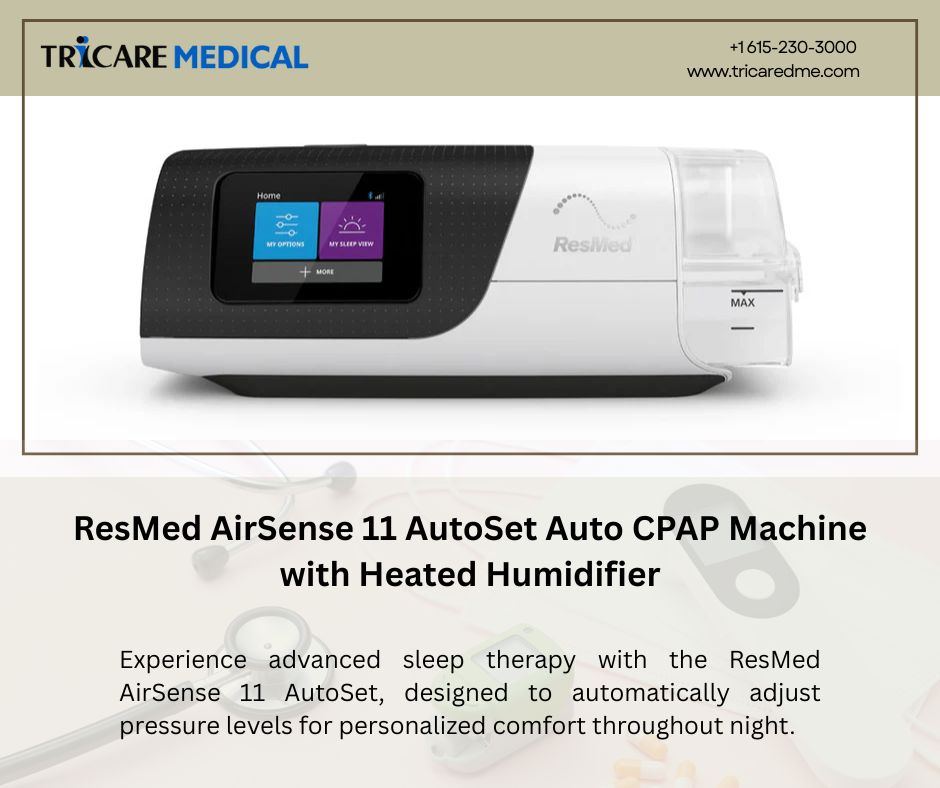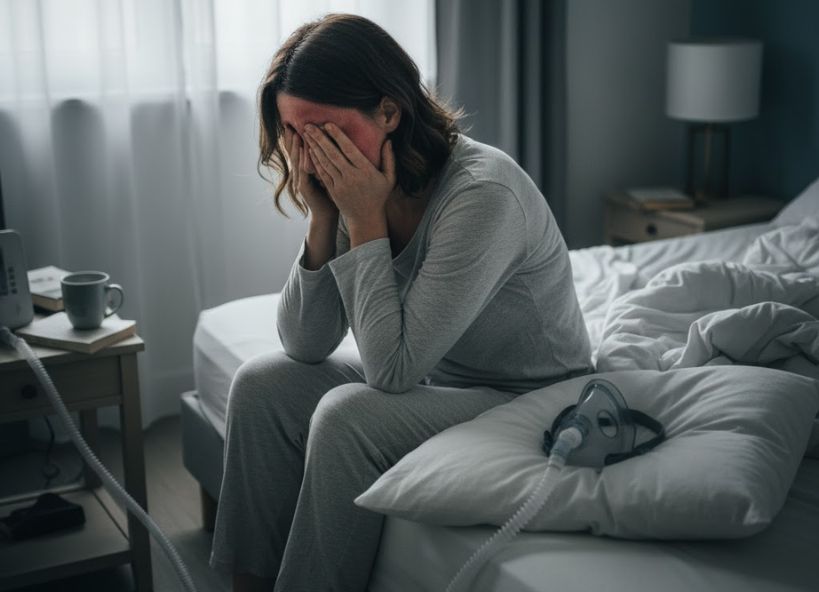Common Issues for First-Time CPAP Users
- 6 min reading time
Starting treatment with a CPAP (Continuous Positive Airway Pressure) machine can be a transformative experience for those diagnosed with sleep apnea. However, first-time users often encounter several challenges as they adjust to their new sleep therapy. Understanding these common issues and knowing how to address them can make the transition smoother, ensuring that users can benefit from their CPAP treatment and enjoy better sleep. In this blog, we’ll explore some of the most frequent issues new CPAP users face and provide helpful solutions to overcome them.
Discomfort from the CPAP Mask
One of the most common challenges for first-time CPAP users is discomfort from wearing the mask. CPAP masks come in various styles, such as nasal masks, full-face masks, and nasal pillows, and it can take some time to find the right fit. Many users report feeling claustrophobic or experiencing pressure on their face, which can make it difficult to fall asleep.
Solution: Finding the right mask is key to overcoming this discomfort. It may require trying out different types and sizes to find the best fit for your face. Most CPAP providers, including those at Tricare Medical, offer mask fitting services and guidance to ensure comfort. Additionally, mask liners or pads can reduce skin irritation, and making sure the mask is not too tight can help alleviate pressure.
Dry Mouth and Throat
Dry mouth and throat are common complaints among CPAP users, especially for those who breathe through their mouth while sleeping. The continuous airflow from the CPAP machine can dry out the mouth and throat, leading to discomfort and irritation. This can be particularly problematic for people using a nasal mask.
Solution: To combat dry mouth, consider using a heated humidifier that can be attached to your CPAP machine. A humidifier adds moisture to the air, making it more comfortable to breathe and preventing your mouth and throat from drying out. Additionally, using a full-face mask instead of a nasal mask can help if you tend to breathe through your mouth during sleep.
Difficulty Falling Asleep
Adjusting to the sensation of wearing a CPAP mask and the continuous airflow can make it difficult for some first-time users to fall asleep. The initial feeling of having a foreign object on your face and the noise from the machine can be disruptive to sleep.
Solution: It’s important to give yourself time to adjust. Try wearing the mask for short periods during the day while relaxing, so you can become more familiar with the sensation before using it at night. You can also try gradually increasing the CPAP pressure setting to find the most comfortable level. Creating a calming bedtime routine and keeping the machine as quiet as possible by placing it on a soft surface (like a cloth) can also help you ease into sleep more easily.
Air Leaks from the Mask
Air leaks occur when the CPAP mask doesn’t fit properly or is not positioned correctly. These leaks can cause discomfort and disrupt sleep as the air is forced out, often resulting in a loud noise. They can also lead to reduced therapy effectiveness, as the air pressure may not remain constant throughout the night.
Solution: Ensure that the mask is properly adjusted to your face. Most masks have adjustable straps, so make sure they are neither too tight nor too loose. A proper seal is essential for optimal CPAP therapy. If leaks persist, try using a different mask type or consult your CPAP supplier to ensure a better fit. Mask cushions can also help to create a better seal and prevent leaks.
Mask or Headgear Irritation
Some first-time CPAP users experience irritation on their face, nose, or forehead due to the mask or headgear. This can include redness, rashes, or skin indentations, especially when the mask is too tight or worn for extended periods.
Solution: To prevent irritation, make sure your mask is not too tight. Loosening the straps can reduce pressure on your skin. Using a soft cloth or mask liners between the mask and your skin can also help prevent rashes and pressure sores. Regular cleaning of the mask is crucial, as bacteria build-up can contribute to skin irritation.
Feeling Claustrophobic
Wearing a CPAP mask can trigger feelings of claustrophobia for some users, especially those who are not accustomed to having something on their face while they sleep. The mask can feel restrictive, and the sensation of continuous airflow might feel overwhelming at first.
Solution: Starting with a nasal pillow mask, which covers less of your face, can help alleviate feelings of claustrophobia. Gradually increasing the time, you wear the mask during the day can also help you get used to the sensation. If the issue persists, speak to your healthcare provider about adjusting your therapy or trying a different type of mask that feels less confining.
Noise from the CPAP Machine
Though CPAP machines are generally designed to be quiet, some users may still find the sound of the machine distracting when trying to fall asleep. This can be especially challenging for light sleepers or those who are sensitive to noise.
Solution: Ensure that the CPAP machine is placed on a soft surface, like a towel or blanket, to help dampen the sound. Additionally, you can try using a white noise machine or a fan to mask the noise of the CPAP. Some newer CPAP models are specifically designed to be quieter, so consider upgrading to a quieter model if the sound remains a problem.
Read more: Best CPAP Masks for Mouth Breathers
Conclusion
While there are several common issues faced by first-time CPAP users, most of these challenges can be overcome with patience and the right adjustments. It’s important to remember that getting used to CPAP therapy is a gradual process, and most issues will subside as you adapt. If you continue to experience problems, don't hesitate to reach out to your CPAP provider or healthcare professional for guidance. The benefits of CPAP therapy—improved sleep quality, better energy levels, and enhanced overall health—are well worth the effort in the long run.



